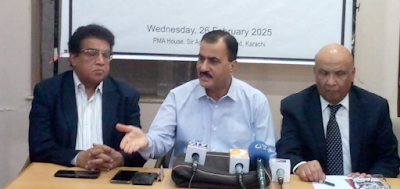Stunting rate among children recorded at 27.3pc in Punjab
MICS 2024 provides vital insights for policymakers and development partners, highlighting neonatal and under-five child mortality rates
KARACHI: A latest report of Punjab Multiple Indicator Cluster Survey (MICS) has revealed that crucial indicators of a child’s nutritional landscape remain insignificantly changed in seven years since 2018 across the province, with a stunting rate among children under five years at 27.3% in 2024, against WHO cutoff point of about 2.5% in healthy population.
Providing
key insight from data providing overview of the well-being of children, women
and households in Punjab, the recently released MICS 2024 provides vital insights
for policymakers and development partners, highlighting neonatal and under-five
child mortality rates at 33 and 55 (per 1,000 live births), respectively,
infant mortality rate at 49, rate of infants under 6 months exclusively
breastfed at 33.9%, and mixed feed rate at 33%.
According
to 2017-18 MICS report, the infant mortality rate in Punjab was 60 and
under-five rate was 69. The 2024 survey revealed that the infant mortality rate
remained 51% for males and 48% for females, while the under-five mortalities
were males (56%) and females (53%).
Data for
the survey were collected from January to July 2024 involving over 45,000
households in urban (41%) and rural areas across all 36 districts of Punjab.
Key findings of the seventh round of MICS divided the mothers interviewed or
reached in three categories –less than 20 years (35%), 20-34 years (33%) and
35-49 years (30%).
The rate
of stunting (deficit in height for age of a child) among the deserving children
decreased by 0.6% per year since the last Punjab MICS survey, while the wasting
(referring to children too thin for their height) rate increased to 10.2%, i.e.
at the rate of 0.4% every year. Of the surveyed children, 1.9% were found
overweight (referring to children too heavy for their height), compared to 2%
of 2018, and 20.9% were found underweight (a composite form of under
nutrition), compared to 21% in 2018.
Data
collected for the latest MICS suggested the neonatal (first month of life)
mortality rate at 33 per 1,000 live births, post-neonatal at 16, infant
(between birth and first birthday) mortality rate at 49, child (between first
and fifth birthdays) mortality rate at 6 and under-five (between birth and the
fifth birthday) mortality rate at 55, against estimated neonatal mortality rate
of 41, post-neonatal (19), infant mortality (60), child mortality (9) and
under-five mortality rate (69) in 2018.
About 7,000 households were reached for water-quality testing, revealing that 99.4% were getting drinking water through improved sources, including 58.1% of those receiving water at their premises for a period ranging from 30 minutes or above. As many as 87.3% households were using improved sanitation –81% in rural areas and 95.5% in urban areas, against 6.3% of the household members defecating in the open, i.e. bush and field --10.3% in rural and 0.6% in urban settings.
 |
| Graphics from Punjab MICS 2024 |
The MICS
found 66.7% of children were attending primary schools, while 18.6% were taking
early childhood education. Only 46.8% of the surveyed children under the age of
five years were registered for their birth with civic authorities, with 54.9%
of the children, mothers and caregivers knew how to register birth.
Covering
the child marriage aspect among women in the age bracket of 15-49 years, the
report revealed that 3% of the surveyed women married before the age of 15.
Studying the marriage trends in women of age 20—49, it was revealed that 3.41%
were married before the age of 15, with another 14.5% married before the age of
18. In the case of men, the survey found 0.9% married before the age of 15, and
4.8% married before the age of 18. --MA
Courtesy: Social Track, Karachi.





Comments
Post a Comment